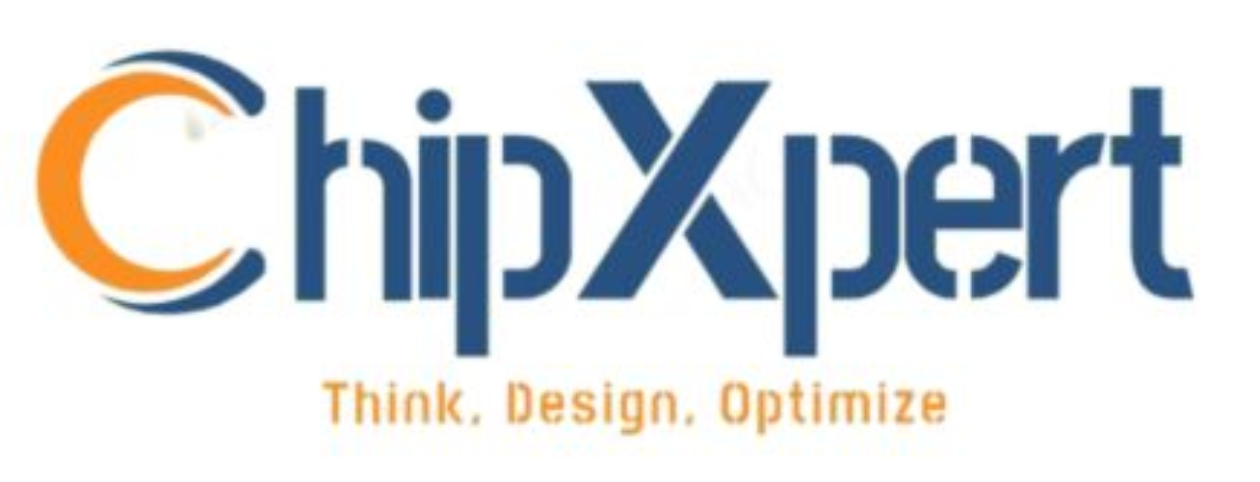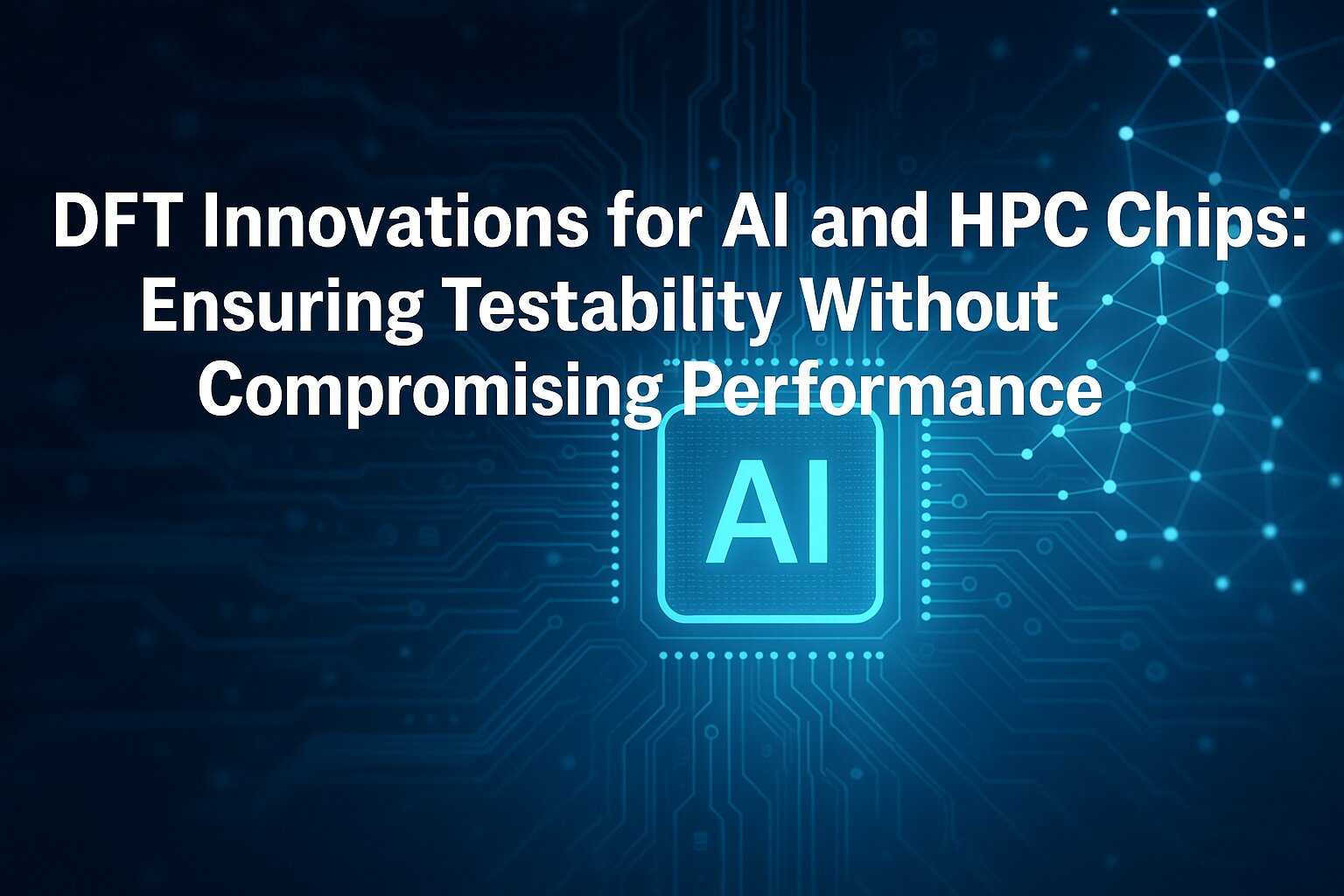DFT Innovations for AI and HPC Chips: Ensuring Testability Without Compromising Performance
In today’s rapidly evolving semiconductor landscape, AI (Artificial Intelligence) and HPC (High-Performance Computing) chips are setting new benchmarks in performance, complexity, and power efficiency. From data centers handling zettabytes of information to AI models processing billions of parameters in milliseconds, the demands placed on silicon are unprecedented. Yet, amidst the race for speed and efficiency, one critical aspect must never be overlooked: Design for Testability (DFT).
DFT is no longer just about ensuring that a chip works as intended before it ships. For modern AI and HPC chips built on advanced nodes like 5nm and 3nm, DFT has become a sophisticated discipline in itself — one that must balance test coverage, performance, power, area, and yield without adding unnecessary overhead.
At ChipXpert Technologies Pvt. Ltd., a leading VLSI training institute in India (www.chipxpert.in), we focus on preparing engineers with the latest skills in DFT methodologies to meet the challenges of tomorrow’s AI and HPC silicon.
Why DFT Matters More Than Ever for AI and HPC
AI and HPC architectures are no longer “simple” chips; they are complex systems-on-chip (SoCs) packed with compute cores, memory arrays, high-speed interconnects, and accelerators. Testing these chips is like inspecting a skyscraper’s integrity without dismantling it — every block must be observable and controllable, but without compromising the building’s function.
The stakes are high:
- A test escape in a data center AI chip could lead to catastrophic failures in critical AI decision-making.
- For HPC, undetected faults can derail simulations that support sectors like weather forecasting, finance, and national security.
This is why DFT innovations are crucial. They ensure robust testability without sacrificing performance, power, or time-to-market.
Core DFT Innovations Driving AI and HPC Success
1. Hierarchical DFT for Scalability
AI and HPC chips often exceed billions of gates. Testing them monolithically is inefficient. Hierarchical DFT breaks down these massive chips into manageable blocks, each with its own localized scan structures and compression logic. This modularity:
- Enhances test coverage scalability.
- Reduces pattern generation and application time.
- Enables early testing and debug at the subsystem level.
Hierarchical DFT is a cornerstone methodology we emphasize in our DFT training programs at ChipXpert (Explore DFT Training).
2. Advanced Scan Compression
Modern scan compression techniques, such as X-tolerant compression, allow significantly fewer test pins to manage larger scan chains. This is crucial for AI and HPC designs where I/O resources are already constrained by high-speed interfaces.
Benefits include:
- Shorter test times.
- Lower ATE (Automatic Test Equipment) costs.
- Higher fault coverage.
By training engineers on tools like Tessent (Siemens), SpyGlass DFT (Synopsys), and Modus (Cadence), we ensure that our students can implement these cutting-edge techniques effectively.
3. Logic BIST for In-Field Testability
AI and HPC chips must often operate in environments where post-silicon debugging is impossible (think satellites, autonomous vehicles, or remote data centers). Logic Built-In Self-Test (LBIST) provides an on-chip mechanism for periodic self-verification, ensuring continued reliability.
LBIST has evolved to support:
- High-speed clock domains.
- Secure test modes.
- Power-aware operations to prevent excessive stress during self-tests.
4. Memory BIST and Repair
With AI models demanding massive on-chip SRAMs, robust Memory Built-In Self-Test (MBIST) is critical. Advanced MBIST solutions now integrate redundancy management and repair capabilities, enabling yield improvements without sacrificing die area or performance.
This is especially crucial in HPC architectures, where memory hierarchies (L1, L2, L3 caches) play a pivotal role in performance optimization.
5. Power-Aware DFT for Low-Power AI Chips
Power is a precious commodity in AI accelerators and HPC systems. Modern DFT solutions integrate power-aware test methodologies that ensure:
- Safe operation during scan shifts.
- Reduced toggling to avoid IR-drop and thermal hotspots.
- Accurate coverage without unintended stress on circuits.
At ChipXpert, we teach power intent (UPF/CPF) integration with DFT flows to align test strategies with real-world power constraints.
Balancing Performance with Testability: The Industry Dilemma
One of the biggest challenges AI and HPC chip designers face is the trade-off between testability and performance. Aggressive performance targets leave little margin for additional DFT structures that could impact timing or power.
The industry’s solution? Early DFT planning integrated tightly with architecture, RTL, and physical design stages. Co-optimization allows testability to grow organically with the design rather than as a bolt-on afterthought.
Tools like Cadence Modus DFT, Synopsys DFTMAX, and Mentor Tessent provide integrated solutions that enable this holistic approach.
The Future: AI-Assisted DFT for AI Chips
It’s fitting that AI is now helping solve AI’s own DFT challenges. EDA vendors are leveraging machine learning to:
- Predict fault-prone areas.
- Optimize scan chain ordering.
- Reduce pattern counts.
- Enhance diagnosis precision.
This emerging field blends traditional DFT knowledge with AI techniques — a combination we are actively incorporating into our advanced VLSI training modules at ChipXpert.
Building Industry-Ready DFT Engineers at ChipXpert
At ChipXpert Technologies Pvt. Ltd., we understand the evolving needs of the semiconductor industry. Our DFT training programs bridge the gap between academic theory and industry practice, covering:
- Scan Insertion & Compression
- MBIST / LBIST Architectures
- JTAG / Boundary Scan (IEEE 1149.x)
- DFT Signoff & ATE Correlation
- Latest Tool Flows (Cadence, Synopsys, Siemens EDA)
Our hands-on training, combined with real-world projects and industry expert mentoring, ensures that our students can confidently tackle the challenges of modern AI and HPC chip design.
To learn more, visit our detailed course outline here:
👉 ChipXpert Design for Test Training
Final Thoughts
As AI and HPC push the boundaries of silicon, DFT innovations remain pivotal to ensuring quality, reliability, and profitability. From hierarchical test strategies to AI-assisted optimization, DFT is evolving hand-in-hand with the very chips it seeks to validate.
If you are a VLSI aspirant looking to specialize in this crucial domain or a professional seeking to upskill, DFT expertise is more relevant than ever. At ChipXpert, we prepare you not just for today’s challenges but for the innovations yet to come.



